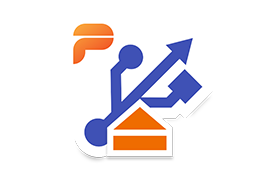Companies face the problem of managing and examining huge quantities of information from quite a lot of assets. Conventional databases take care of two separate duties, transactional and analytical processing. Hybrid transactional and analytical processing (HTAP) programs mix those purposes into one, permitting companies to control and analyze records extra successfully.
On this article, we will be able to supply an summary of HTAP, discover its advantages and demanding situations, and provide an explanation for the way it can enhance records control and decision-making.
Assessment of Database Panorama
Prior to now, companies needed to behavior transactional and analytical tasks the usage of other platforms. While OLAP programs targeting intricate records research, OLTP programs had been made for fast and exact transaction processing.
The need for arduous Extract, Turn out to be, Load (ETL) procedures to transport records between the 2 programs used to be one of the crucial inefficiencies caused by means of this cut up. By means of fusing some great benefits of OLTP and OLAP, HTAP programs be offering a unique way to processing analytical and transactional workloads in genuine time.
Construction of HTAP
Previous to hybrid transactional and analytical processing, OLTP and OLAP workloads had been normally treated by means of enterprises the usage of other databases. Vital difficulties had been introduced by means of this department, in particular when making an attempt to make real-time transactional records obtainable for analytical queries.
ETL pipelines incessantly led to delays in records extraction and loading, leaving decision-makers with out-of-date knowledge. To be able to resolve this factor, HTAP used to be created, which allows companies to do each transactional and analytical queries at the similar records with out requiring intricate, resource-intensive ETL procedures. HTAP lowers records latency and offers well timed insights for operational decision-making by means of combining the 2 programs.
Advantages of HTAP
HTAP gives a number of benefits over conventional OLTP and OLAP programs. Listed below are one of the crucial key advantages:
-
Unifying Transactional and Analytical Information
One of the crucial number one advantages of HTAP is the facility to unify siloed transactional and analytical records. Conventional OLTP and OLAP programs regularly perform in isolation, making it tough to accomplish real-time research on recent transactional records.
HTAP solves this by means of permitting transactional and analytical records to be processed in combination, making it conceivable to run real-time queries on the most recent records. This capacity is an important for organizations that depend on time-sensitive insights, equivalent to in predictive analytics or dynamic decision-making.
-
Getting rid of the Want for ETL Pipelines
By means of combining OLTP and OLAP workloads in one machine, HTAP gets rid of the desire for normal ETL pipelines that switch records between separate programs. ETL processes are resource-intensive and introduce delays, particularly when huge volumes of information wish to be transferred.
With HTAP, records is right away to be had for each transactional and analytical processing, decreasing the desire for advanced records transfers and making sure that insights are in line with up-to-date knowledge.
-
Speedy Get admission to to Recent Information
HTAP programs permit you to behavior analytical queries on new transactional records once it’s created. This immediate get entry to to real-time records allows organizations to seize fleeting alternatives that may in a different way be ignored. As an example, companies can analyze buyer conduct in real-time to regulate advertising and marketing methods or optimize stock control in line with present call for.
-
Simplified Information Structure
Transactional and analytical workloads are mixed right into a unmarried database machine the usage of HTAP, which streamlines records structure. This simplicity allows companies to be aware of higher-value duties by means of reducing the operational burden associated with managing many programs. Companies can simplify their records control procedures and save their IT bills by means of managing a unmarried machine.
Demanding situations of HTAP
Even though HTAP has many benefits, it additionally has demanding situations. One of the crucial key obstacles come with:
-
Blended Workload Complexity
Efficiency problems would possibly rise up as a result of HTAP databases should organize transactional and analytical workloads similtaneously. Useful resource-intensive analytical queries involving in depth records scans and complex aggregations would possibly conflict with transactional actions, which call for fast and constant execution. Efficiency trade-offs would possibly rise up from juggling the desires of each activity varieties in real-time, as one workload would possibly affect the opposite.
Analytical efficiency is also compromised in HTAP programs to optimize for transactional processing, and vice versa. As an example, shared CPU, reminiscence, and I/O bandwidth may cause analytical queries to lag as extra sources are allotted to transaction processing.
However, transactional actions would possibly enjoy reduced throughput and larger latency if analytics are prioritized. Cautious control of this trade-off is needed to make sure that each workloads run neatly.
OLTP and OLAP workloads regularly contain other records fashions. OLTP transactions are designed to replace person information and handle records consistency, whilst OLAP queries contain advanced aggregations and multi-dimensional research. Seeking to are compatible each kinds of workloads into the similar records style can result in inefficiencies and obstruct efficiency.
As records volumes develop, HTAP programs can battle to handle the similar degree of efficiency and scalability as devoted OLTP or OLAP programs. Trendy packages regularly require horizontal scalability to take care of expanding records quite a bit, however managing each transactional and analytical workloads inside a unmarried machine will also be tough. Making sure that the machine scales successfully with out compromising efficiency for both workload is a vital problem.
HTAP programs face useful resource rivalry as each transactional and analytical workloads compete for a similar sources, equivalent to CPU, reminiscence, and I/O bandwidth. This rivalry can result in useful resource bottlenecks, inflicting efficiency fluctuations and attainable machine instability. Right kind useful resource allocation and prioritization are crucial to keep away from those problems.
-
Repairs and Management Complexity
Managing an HTAP machine is extra advanced than administering standalone OLTP or OLAP programs. Database directors should make sure that each transactional and analytical workloads are optimized and appearing neatly. This added complexity can build up operational overhead and require extra subtle tuning and tracking.
-
Obstacles in Analytical Processing
Even though HTAP programs permit for real-time analytical queries, they would possibly not be offering the similar degree of analytical features as devoted OLAP databases. Specialised OLAP programs are optimized for advanced, large-scale analytical processing and may give richer insights and quicker efficiency for sure kinds of queries.
-
Integration with Rising Applied sciences
HTAP programs would possibly battle to combine seamlessly with trendy disbursed computing, microservices, and serverless architectures. Those more recent applied sciences are optimized for explicit workloads and will pose demanding situations for hybrid databases like HTAP, which goal to strengthen each transactional and analytical processing.
Free up your attainable with the Microsoft Qualified Azure Information Engineer Affiliate DP 203 route. Grasp HTAP applied sciences and become your records abilities these days!
OLTP Database
OLTP databases are made to control rapid, transactional processes that want precision and reliability. Day by day duties together with web banking, e-commerce, and resort reservations are treated by means of those platforms. The atomicity of OLTP transactions — which means that that every transaction is indivisible, it both fails or completes in complete — is a an important feature. This promises that right through the transaction procedure, the knowledge will keep proper and constant.
OLAP Database
OLAP programs analyze huge records units and get to the bottom of subtle queries. Customers can use those databases to chop and cube records to seek out patterns and insights. OLAP is normally used in industry intelligence (BI) answers, which mix and analyze records from a number of assets to make strategic selections. Against this to OLTP, OLAP programs organize multidimensional research and large-scale aggregations.
Actual-Time OLAP Databases
Actual-time OLAP databases are made to procedure and analyze records in genuine time, giving customers the latest knowledge. Low-latency get entry to to analytical records is equipped by means of those databases, which mix the features of typical OLAP programs with the capability to control real-time records streams. Streaming records platforms and real-time OLAP databases are incessantly mixed to supply well timed insights for dynamic decision-making.
HTAP Databases
By means of combining the best options of OLTP and OLAP, hybrid transactional and analytical processing programs allow corporations to do each transactional and analytical duties inside a unmarried database. Actual-time get entry to to transactional and analytical records is made conceivable by means of this integration, which additionally gets rid of the requirement for ETL procedures. Since HTAP databases can take care of each varieties of workloads directly, companies are in a position to make data-driven selections extra temporarily and successfully.
Transformations
With the expanding call for for real-time records insights, HTAP programs are incorporating new transformations equivalent to cloud-native architectures, disbursed computing, and system finding out. On account of those adjustments, HTAP programs are in a position to scale extra successfully and supply advanced efficiency for workloads together with transactions and research.
Conclusion
In conclusion, HTAP programs be offering companies the facility to seamlessly organize each transactional and analytical records inside a unmarried platform, simplifying workflows and embellishing decision-making. By means of getting rid of the desire for separate programs and decreasing the complexities of information switch, organizations can harness real-time insights and force extra well timed, knowledgeable movements.
In case you are taking a look to construct a powerful basis in records control and engineering, believe the Microsoft Qualified Azure Information Engineer Affiliate: DP-203 certification from Simplilearn. This certification will equip you with the abilities had to organize and optimize records workflows on Azure, complementing your working out of complicated records programs like HTAP.
FAQs
1. What’s HTAP in Azure?
HTAP in Azure combines transactional and analytical workloads in one machine for real-time records processing and analytics.
2. When to make use of HTAP?
Use HTAP when you wish to have real-time analytics on transactional records with out depending on ETL processes.
3. What’s the distinction between OLAP and OLTP Snowflake?
OLAP in Snowflake is for advanced records research, whilst OLTP handles real-time transactions. Snowflake helps each however is optimized for OLAP.
4. Is SingleStore HTAP?
Sure, SingleStore is an HTAP database that helps each transactional and analytical workloads.
5. What’s the distinction between HTAP and OLAP?
HTAP helps each transactional and analytical workloads in real-time, whilst OLAP focuses only on advanced records research the usage of pre-loaded records.
supply: www.simplilearn.com









